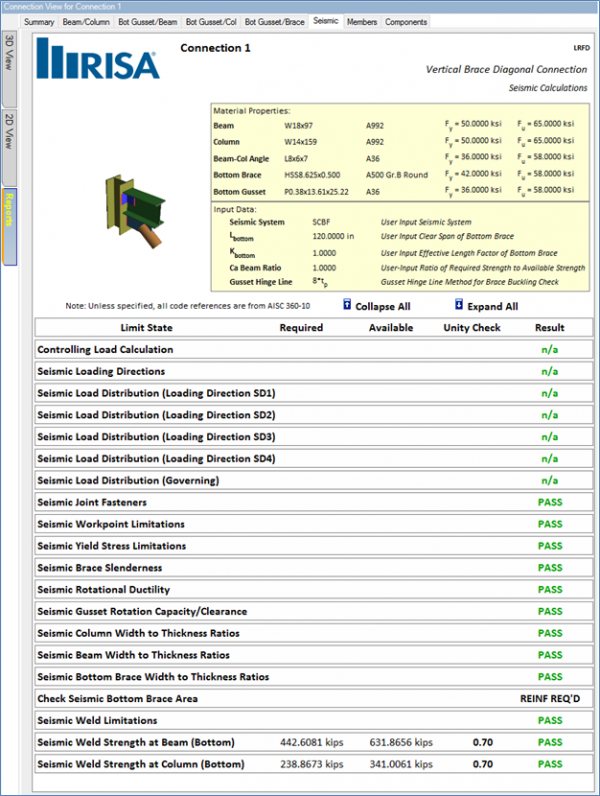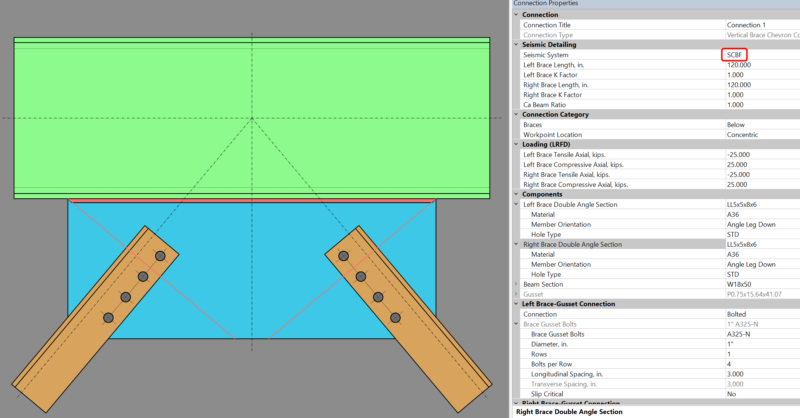Products
Learn
Support
Company
Vertical Diagonal Brace connections and Vertical Chevron Brace connections may be designed as Special Concentric Braced Frame (SCBF) connections in RISAConnection v6.

RISAConnection designs SCBF per the provisions found in section F2 of the AISC Seismic Provisions for Structural Steel Buildings (AISC 341-2010).
SCBF systems are very similar to OCBF connections; however they include additional detailing requirements to direct ductile behavior into the braces. These detailing requirements provide for greater energy dissipation and ductility which means SCBF can be designed to a lower force level to that of OCBF connections.
The requirements for SCBF systems per the AISC 341-10 include the following:
Columns and Braces are designed as highly ductile members. Beams are designed as moderately ductile members.
Brace members are limited to a slenderness of KL/r ≤ 200.
Brace connections must be designed to withstand the flexural forces imposed by brace buckling.
Connection strength requirement which ensures that the brace member acts as a ductile link in the frame prior to the connection failing.
Two analyses must be considered; one where both braces are assumed to resist their expected strength, and the other where the compression brace is assumed to have already buckled.
RISAConnection calculates the required design strength of the braces in tension and compression and presents the full results on the new Seismic tab of the results report. The results can include the following detailed calculations and checks:
Controlling Load Calculation
Seismic Loading Combinations
Seismic Load Distribution Calculations
Seismic Workpoint Limitations
Seismic Yield Stress Limitations
Seismic Brace Slenderness
Seismic Rotational Ductility
Seismic Brace Buckling
Seismic Brace Width to Thickness Ratios
Seismic Weld Limitations
Seismic Weld Strengths

